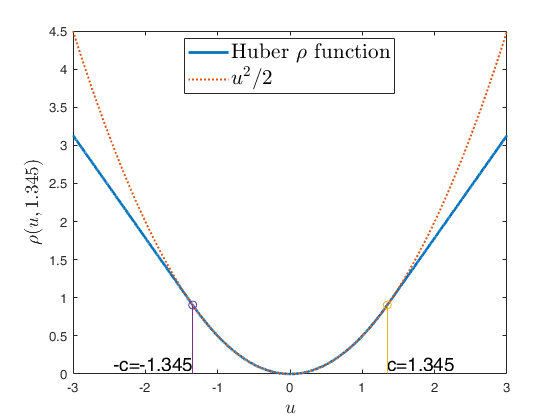HUrho
HUrho computes rho function for Huber
Syntax
rhoHU=HUrho(u,c)example
Examples
Related Examples
Input Arguments
Output Arguments
More About
References
Maronna, R.A., Martin D. and Yohai V.J. (2006), "Robust Statistics, Theory and Methods", Wiley, New York.
Riani, M., Cerioli, A. and Torti, F. (2014), On consistency factors and efficiency of robust S-estimators, "TEST", Vol. 23, pp. 356-387.

|
HUpsix |
HUwei |
 |
|
|
Functions |
|
• The developers of the toolbox • The forward search group • Terms of Use • Acknowledgments
 Plot Huber rho function.
Plot Huber rho function.